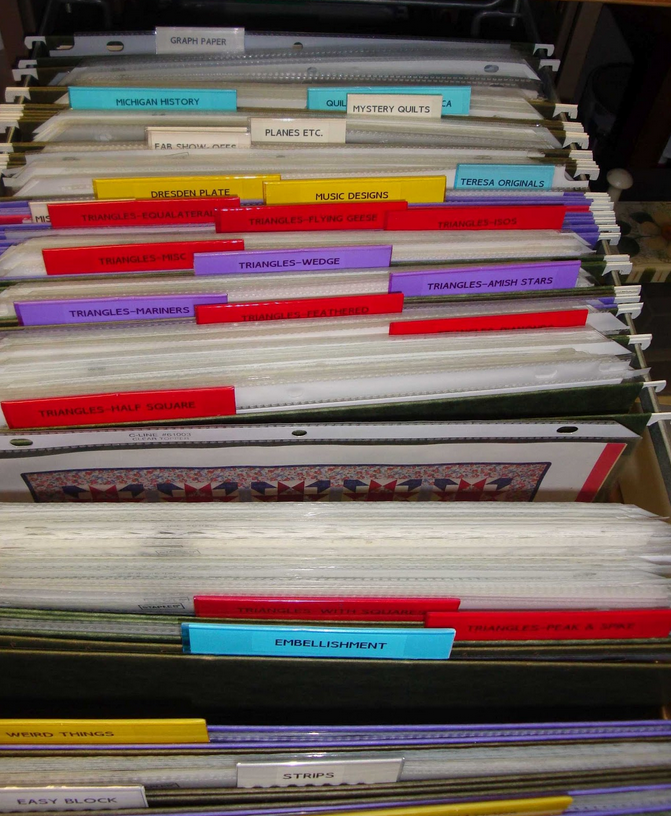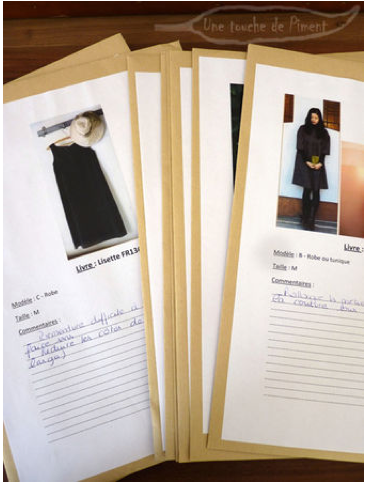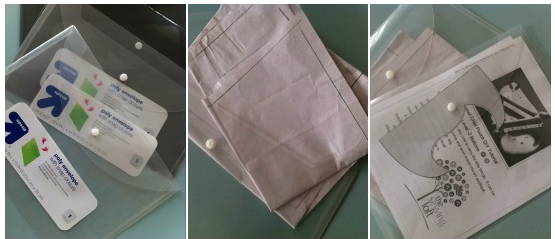This week's homework is to sort through your collection of patterns/projects. Over time, patterns, like magazines, often sit forgotten and idle for years. Now it's time to review your collection (whether packaged or pages from magazines) and decide which pieces still speak to you. If so, set them a "keep" pile. Those that are no longer relevant, set in a "donate" or toss pile.
Once the sorting has been completed, decide which is the best way for you to keep patterns organized and within easy access.

(Photo from Chasing Cottons)
1. If your focus is to cut down on space to hold paper, scan patterns and store in files on your computer, or on a memory stick.
2. Label memory sticks by type of subject (Crafts, Quilts, Gifts, etc.). They are relatively inexpensive and can continually be updated as needed.

If you prefer to file printed patterns, here are several ideas that might work for you.

(Pattern filing sytem by FabricTherapy)
1. Fabric Therapy opts to place patterns in clear sheet protectors and file by topic in a file cabinet.
2. Place patterns in zip close clear sheet protectors and file by topic in a three ring binder. The zip helps keep everything in place, even if the notebook is accidentally dropped.
3.Une touche de Piment uses manila envelopes with pattern image pasted to the outside as her sorting method.

4. Heather at The Sewing Loft stores her patterns in clear snap closuer envelopes.





.jpg)



RSS feed for comments to this post